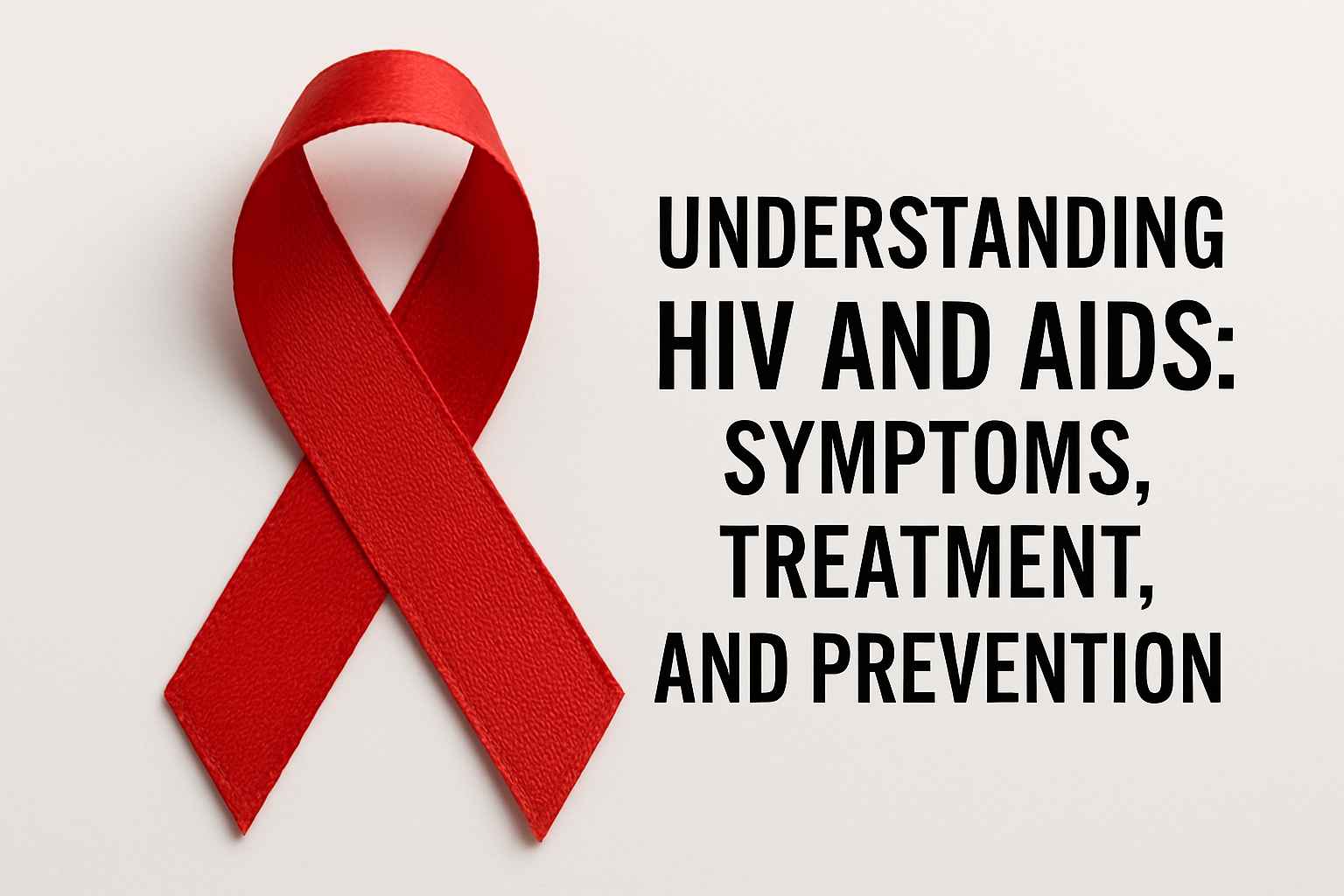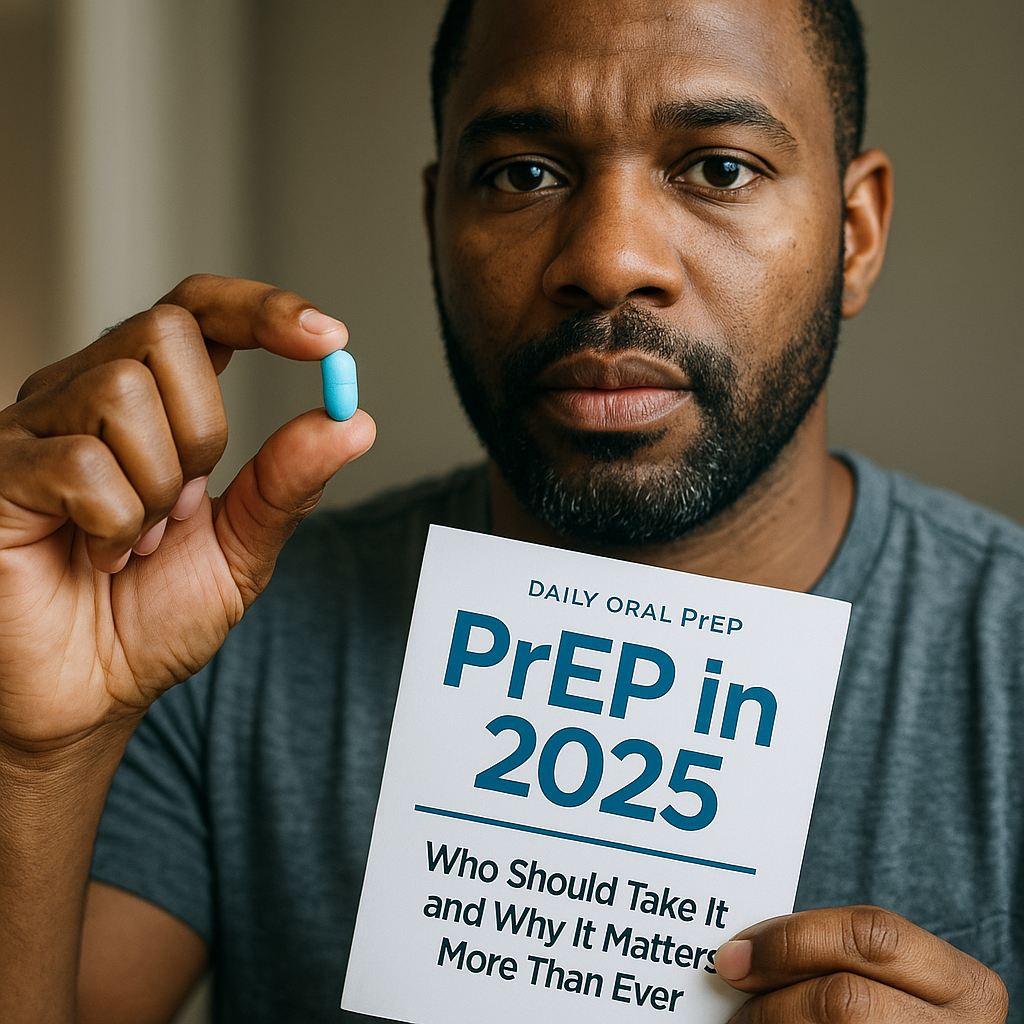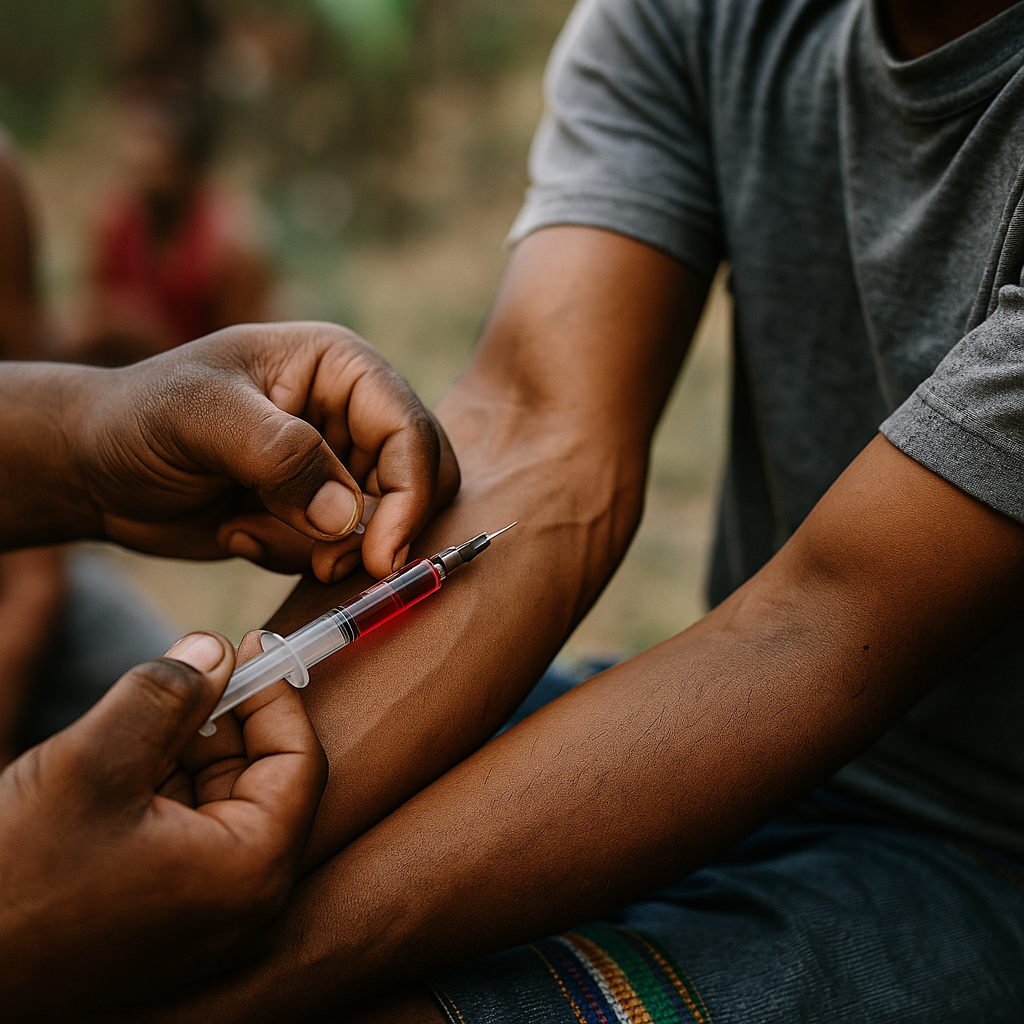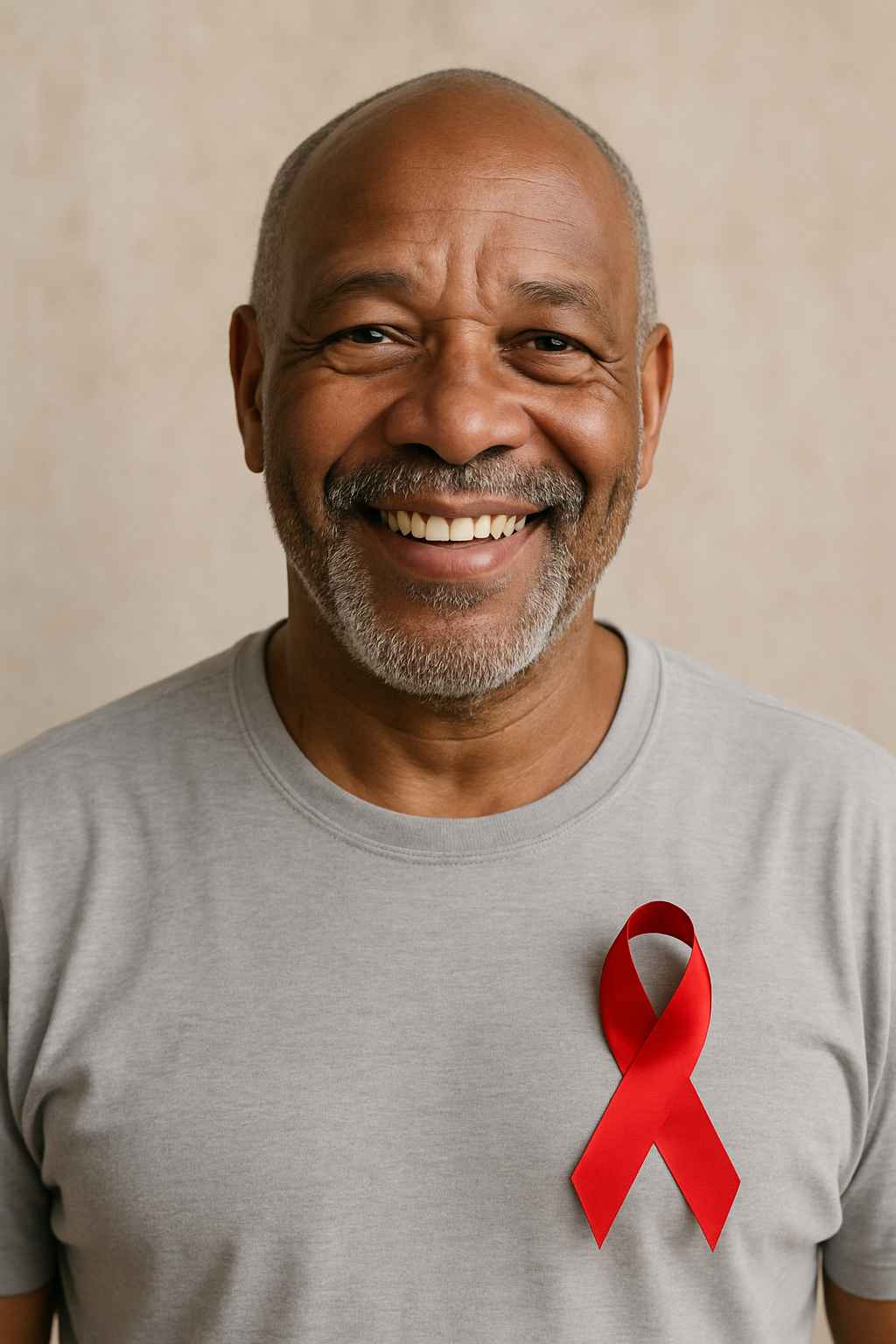What Are HIV and AIDS?
Human immunodeficiency virus (HIV) is a virus that attacks the body’s immune system, specifically CD4 or “helper” T‑cells. Without treatment, HIV can lead to acquired immunodeficiency syndrome (AIDS), a more advanced stage where the immune system is so weakened that it struggles to fend off infections and certain cancers. (who.int)
It’s important to recognize that HIV does not always lead to AIDS—especially now, with early diagnosis and access to effective treatments. People living with HIV who begin antiretroviral therapy (ART) early can maintain good health and prevent progression to AIDS. (my.clevelandclinic.org)
Symptoms: How HIV Progresses
Acute HIV Infection (1‑4 weeks after exposure): Some people experience flu‑like symptoms. These may include fever, sore throat, fatigue, swollen lymph nodes, rash, muscle aches, headache. Others may have very mild symptoms or none at all. (emedicinehealth.com)
Clinical Latency (Chronic Stage): During this stage, HIV is still active but reproduces at lower levels. There may be no noticeable symptoms. Without treatment, this stage can last years. However, virus is still causing damage to the immune system during this period. (my.clevelandclinic.org)
AIDS Stage: If untreated, HIV may weaken the immune system so severely that opportunistic infections or certain cancers appear. Symptoms can include rapid weight loss, recurring fever or profuse night sweats, extreme and unexplained tiredness, prolonged swelling of the lymph glands, diarrhea lasting more than a week, sores, neurological disorders, pneumonia. (healthline.com)
Treatment: What’s Available and What’s New in 2025
Antiretroviral therapy (ART) remains the backbone of HIV treatment. ART combines several medicines to suppress HIV replication, reduce viral load, protect immune function, and prevent onward transmission. When ART keeps HIV viral load undetectable, people can live long, healthy lives. (my.clevelandclinic.org)
Recent progress includes long‑acting injectable therapies, which are changing how often people need treatment. For example, lenacapavir (also known as Yeztugo in the U.S. preventive use) has been approved for use in HIV prevention with only two injections per year. (gilead.com)
There are also promising advances in drug classes, including capsid inhibitors (lenacapavir is one), that can offer more options especially for people with drug resistance, or for whom daily oral regimens are challenging. (gilead.com)
Finally, researchers are working on cure strategies—both functional cure (suppressing virus without continuous ART) and sterilizing cure (eliminating virus entirely). These are still in research phases. Clinical trials involving gene editing, immune therapy, and identifying viral reservoirs are underway. (aids.org)
Prevention: How to Reduce Risk
Know your status. Regular testing is essential. Early diagnosis means earlier treatment, which improves health outcomes and reduces transmission risk. (hivinfo.nih.gov)
Pre‑Exposure Prophylaxis (PrEP). For people who are HIV‑negative but at risk, daily oral PrEP or newer injectable PrEP options can greatly reduce the risk of acquiring HIV. Some of the newest options, like lenacapavir, offer longer durations between doses. (gilead.com)
Post‑Exposure Prophylaxis (PEP). If exposed to HIV recently (within 72 hours), PEP provides a short‑term ART to reduce the chance of infection. It must be started as soon as possible. (emedicinehealth.com)
Safe practices: Use of condoms, clean needles, safer sex practices, harm reduction for people who inject drugs, and preventing mother‑to‑child transmission with appropriate medical care during pregnancy, childbirth, and breastfeeding. (emedicinehealth.com)
Living Well with HIV
With consistent treatment and care, many people living with HIV maintain low or undetectable viral loads, live long lives, and avoid progressing to AIDS. (cdc.gov)
Support systems — medical, mental health, community — are extremely important. Addressing stigma, ensuring access to care, and adherence to treatment all improve outcomes. Wellness includes physical health, mental and emotional health, and social support. (aids.org)
FAQ
Can HIV be cured?
Currently, there is no approved cure. Researchers are exploring both functional and sterilizing cure strategies. These may ultimately allow suppression without continuous ART, but these are still experimental. (aids.org)
Is AIDS the same as HIV?
No. HIV is the virus. AIDS is a later stage of HIV infection where the immune system is severely compromised. Not everyone with HIV progresses to AIDS—especially with treatment. (my.clevelandclinic.org)
If I start treatment early, can I live a normal lifespan?
Yes. Early diagnosis and consistent ART can allow people with HIV to have life expectancy close to those without HIV, depending on overall health and access to care. (healthline.com)
How important is prevention even with treatment available?
Prevention remains crucial—not only to avoid acquiring HIV but also to halt transmission, reduce healthcare burden, and limit spread. Methods like PrEP, PEP, safer behaviors, and emerging injectable preventative drugs are powerful tools. (hivinfo.nih.gov)
Conclusion
Understanding HIV and AIDS involves knowing how the virus works, recognizing symptoms early, and being aware of advancements in treatment and prevention. The good news is that medical science has transformed what used to be a fatal disease into a manageable condition for many. Prevention tools have expanded, treatment has become more flexible and effective, and research into a cure continues. For everyone, knowing your HIV status, staying informed, and accessing care and prevention options are the best ways to protect yourself and others.
Disclaimer: This content is not medical advice. For any health issues, always consult a healthcare professional. In an emergency, call 911 or your local emergency services.




